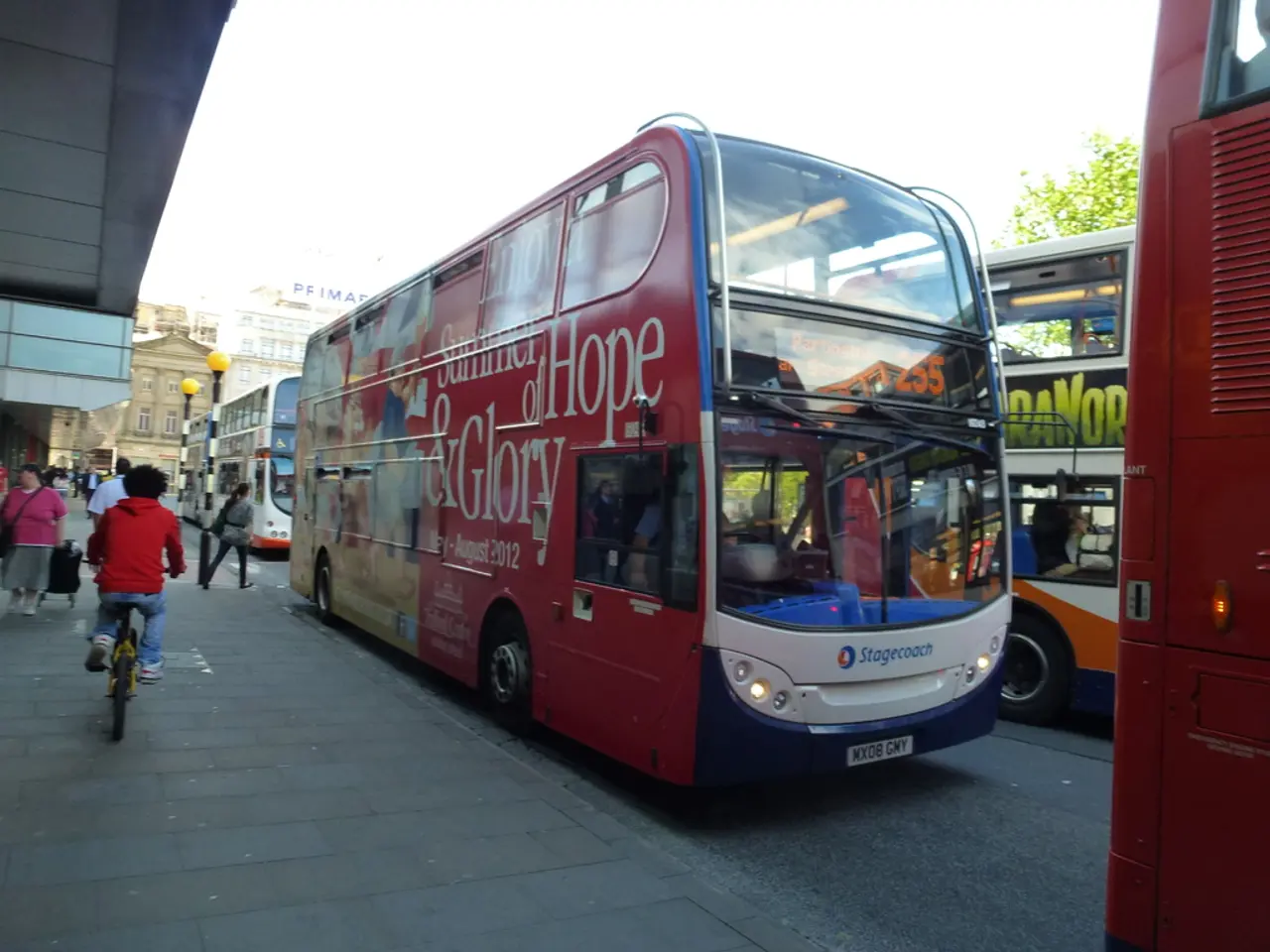Expansion of New York's Greenway by 40 miles may pave the way for this possibility.
New York City Unveils Ambitious Greater Greenways Plan
New York City is set to transform its urban landscape with the ambitious Greater Greenways plan, a comprehensive citywide network of 40 new miles of car-free greenways across all five boroughs. This development, announced recently, marks the city's first comprehensive greenway master plan in over 30 years [1][2][3].
The Greater Greenways plan aims to create safe, car-free connections between neighborhoods, enhancing accessibility and promoting a greener, healthier city. If successful, it could become one of New York City's most iconic features, rivalling the city's famous waterfronts and parks [1].
The plan outlines six priority corridors spanning Brooklyn, Queens, Manhattan, the Bronx, and Staten Island. These corridors are designed to connect over 20 neighborhoods, providing continuous waterfront paths and filling key gaps in the existing greenway network [1].
One of the key priority corridors is the Brooklyn Waterfront Greenway, which connects neighborhoods from Greenpoint to Sheepshead Bay. Another is the Harlem River Greenway, which expands in the Bronx, from Van Cortlandt Park to Randall's Island [1].
Construction on some parts of the plan could begin as early as 2028, though no full timeline has been finalized yet [1][2]. The city has secured $7.25 million for developing implementation plans for five priority "early action corridors" that will deliver 40 miles of new greenways in the outer boroughs [5]. For specific segments, such as the Harlem River Greenway portion of the plan, there is additional funding—for example, $43 million committed by New York State under the Clean Water, Clean Air and Green Jobs Environmental Bond Act to support construction, resilience improvements, and new open spaces along the Harlem River [3]. However, the city has not published a comprehensive total budget estimate for the entire Greater Greenways plan [1][2].
Ben Furnas of Transportation Alternatives believes the Greater Greenways plan offers a once-in-a-generation opportunity to rethink city mobility. The plan is expected to boost local economies by attracting people to parks, shops, and waterfront attractions. Moreover, greenways are intended to reduce air pollution and improve public health [1]. They also aim to make the city more climate-resilient by protecting communities from flooding and extreme heat [1][2].
Securing funding, political will, and public engagement are key for the successful implementation of the Greater Greenways plan. Other existing greenways, such as the Queens Waterfront, which links Long Island City, Astoria, East Elmhurst, and College Point, and the Staten Island North Shore Greenway, a 10-mile greenway between the Goethals and Verrazzano-Narrows bridges, serve as examples of the potential impact of these projects [1].
As the city moves forward with the Greater Greenways plan, it is poised to redefine urban mobility, fostering a greener, healthier, and more equitable city for all New Yorkers.
References:
[1] The New York Times. (2022). New York Plans to Build 40 Miles of Greenways Across the City. [online] Available at: https://www.nytimes.com/2022/04/19/nyregion/nyc-greenways-bike-paths.html
[2] Curbed NY. (2022). NYC's Greater Greenways Plan aims to create a citywide network of 40 new miles of car-free greenways. [online] Available at: https://ny.curbed.com/2022/4/19/23037759/nyc-greater-greenways-plan-car-free-greenways-network-bike-paths
[3] The City. (2022). NYC's Greater Greenways Plan: A Comprehensive Citywide Network of 40 Miles of Car-Free Greenways. [online] Available at: https://www1.nyc.gov/site/planning/news/press/2022/04/nyc-greater-greenways-plan-comprehensive-citywide-network-of-40-miles-of-car-free-greenways.page
[4] The New York Post. (2022). NYC threatens to shut down Lyft's electric bikes unless it verifies riders' ages. [online] Available at: https://nypost.com/2022/04/19/nyc-threatens-to-shut-down-lyfts-electric-bikes-unless-it-verifies-riders-ages/
[5] The City. (2022). NYC Secures $7.25 Million for Developing Implementation Plans for Five Priority "Early Action Corridors" of the Greater Greenways Plan. [online] Available at: https://www1.nyc.gov/site/planning/news/press/2022/04/nyc-secures-7-25-million-for-developing-implementation-plans-for-five-priority-early-action-corridors-of-the-greater-greenways-plan.page
- The Greater Greenways plan aims to promote a healthier city, with the potential to reduce air pollution and improve public health, opening up opportunities for exercise and outdoor activities like fashion-and-beauty photoshoots and sports along the new greenways.
- As New York City moves forward with the implementation of the Greater Greenways plan, it is expected to attract tourists and local patrons to food-and-drink establishments, and home-and-garden shops along the greenways, boosting the local economy.
- The success of the travel industry in New York City could be further enhanced with the realization of the Greater Greenways plan, offering visitors a new way to explore the city, from famous waterfronts to iconic parks, exploring the latest lifestyle trends and fashion-and-beauty hotspots along the way.






